Preema Active
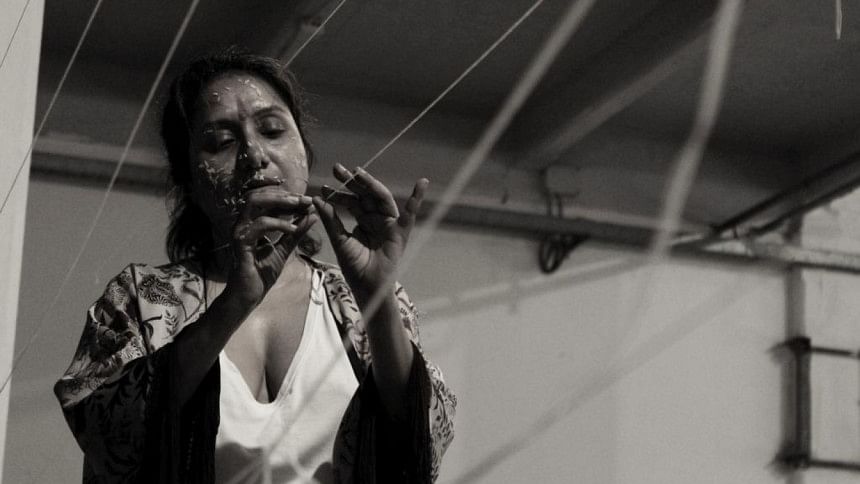
Bangladeshi artist Preema Nazia Andaleeb's artworks 'Nazia Preema: Self Love' were on show at London's Brady Arts Centre (Hanbury St, in London's East End/Tower Hamlets). That notable venue, according to its online history was... "Established in 1896 by Jewish philanthropist Charlotte Rothschild, the club offered children of Spitalfields's underprivileged, Jewish immigrants recreational and educational opportunities, as well as holidays to the countryside."
Today, the Brady Arts Centre is the centre of a Multi-Ethnic cultural community and is popular with the local Bengali population. It is there that I had the delight of being asked to be a guest, speaking briefly at the launch of Bangladesh's intriguing artist Preema Nazia Andaleeb's exhibition, her art, paintings, graphics, and photographs of her performing, as well as showing of her video (DLAB 2019, Bangladesh, Back ART Foundation [BAF] as well being a launch her book (Preema Donna) too.
When I arrived at the Brady Arts Centre, out of the East London Spring drizzle, for the exhibition, and in high hopes of taking a few minutes break in the ground floor café (over a flat white and slice of whatever cake might just be available) the cafe was closing, due to preparations for the launch of Preema's exhibition and book. As the coffee machine had been shut down, I was persuaded to take a nice cuppa tea, instead.
The tea, chats to various early art-loving arrivers, and my nosiness are the erection of the exhibition and the fact that it was the first time I was witnessing Preema's works 'in the flesh' (as it were), led me to look a little more closely at what was being placed on those walls.
Previously, I had written about Preema's book ("Preema Nazia Andaleeb, not a Book Review', in The Blue Lotus magazine, issue 57), and remarked that Preema often creates paintings with an expressionistic feel. Being there, in that Centre, made me reflect upon the work I was seeing.
Some art historians like to place the concept of South Asian Expressionism' (in art) way back to Lucknow Technical School and Bhagwant Singh (with his terra-cotta models of 'Famine', 'Beggars' and 'A Cripple' exhibited in Delhi between 1902 and 1903, at the 'Delhi Exhibition'). Others would like to cite Rabindranath Tagore and his paintings exhibited in 1932, and later the expressionist experimentation at Tagore's Santiniketan, or the progressive painter M F Husain (Maqbool Fida Husain) and his various modernisms as Expression in South Asia's origins. Whichever founder might have been responsible for an early South Asian Expressionism' style, there is little doubt that Preema Nazia Andaleeb now champions that style from out of Bangladesh, with her paintings as well as with her emotive Performance Art pieces.
For, as an added bonus, at the Brady Centre we were treated to a live performance by Preema which began in the 100-seater theatre and ended at the exhibition space in which her artworks were being displayed. It is one thing to see photographs, or even videos (YouTube et al) of Preema's performances, but entirely something else to encounter her interactions when performing live.
"Performance Art", the Tate website (https://www.tate.org.uk/art/art-terms/p/ performance-art) Indicates that... "Throughout the twentieth-century performance was often seen as a non-traditional way of making, art. Live-ness, physical movement, and impermanence offered artists alternatives to the static permanence of painting and sculpture.
In the post-war period, performance became aligned with conceptual art, because of its often-Immaterial nature…More recently, performance has been understood as a way of engaging, directly with social reality, the specifics of space, and the politics of identity."
Preema's performance art is, really, a tool used by the artist and (preferably) to be witnessed live, by an audience, and as it happens. She is quoted as saying "An artist is always in the practice of making art." (An Enigma: Connecting the Dots', by Abesh Mehjabeen, in the Showcase Magazine, July 1, 2021).
Her performance, dangling in the lacuna betwixt life and art, is us witnessing her 'in the practice of making art. Many performance art pieces are akin to the ephemeral Tibetan Tantric sand paintings, which are impermanent and destroyed after completion. Preema's performances cannot be bought, sold, or passed on. Her performance art is time-limited, grown in, and for, the moment. Her performances may be seen to be in the realm of Walter Benjamin and his 1935 essay "The Work of Art in the Age of Mechanical Reproduction, where Benjamin posits the notion of "aura", deemed innate in an original work of art, but lost in a reproduction, in this case, video.
The unexpected nature of Preema's performance in the theatre at the Brady Arts Centre, at first battled, then intrigued as she, initially, vocalised something primal, unintelligible. Then Preema moved amidst the audience, beginning to entreat, asking, then questioning – Šhuno Na (listen, in Bangla).
We, the audience, were intrigued, not knowing what was expected there was no audible audience response. Walking down from the seated audience, pulling at her black attire, Preema had interacted as she went, then took to the moodily lit stage. On that stage, and under those evocative lights, it was as if her quest for self-love drew her to connect with her Jungian/Janovian inner child. She had pouted, stamped petulant feet, and beat the floor with her hands while all the time presenting a fascination of movement, a physicality of action to the, by then rapt, audience.
In time, Preema's engaging presentation moved from the colourfully lit stage, and into the exhibition space. We (but by then, her) audience followed to witness Preema performing a live-action automatic drawing with white chalk, on the cleared cafe floor.
Her movements were ever more intriguing and mesmerising. Like a modern-day (Bangladeshi) Sarah Bernhardt, Preema Nazia Andaleeb gave wholly of herself. She had put her energies of mind, body, and soul into her stunning performance and energized the whole Brady Arts Centre by so doing. It certainly was an experience I would not have wanted to miss.
Martin Bradley is an author and Founding Editor, Blue Lotus (Asian Arts & Culture) Magazine.

 For all latest news, follow The Daily Star's Google News channel.
For all latest news, follow The Daily Star's Google News channel. 

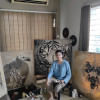

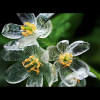
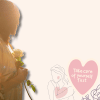


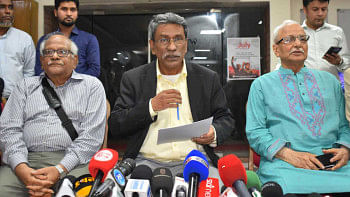
Comments